On a cold April morning in 2011, Henrik cycled out of his home in Copenhagen and spent the next 2.5 years cycling across 4 continents. He intended to cycle round the world. However, when he reached the Amazon he changed his plans, built a raft, and sailed downstream for four months…

Alastair: It’s been hard to track you down to talk! First you were off hiking for thousands of miles [down the PCT] and then you were hungover and overslept. So it’s great to finally talk to you. On your blog you said that you discovered it was actually possible to cycle across an entire country when you were bored in Portugal and you rented a bike and you went from Lisbon to Porto, wearing a pair of jeans. Tell me about that first realisation that a bike could actually take you places.
Henrik: Back then I didn’t cycle to work or anything. I hadn’t done any travels on a bicycle. I heard weird rumours about people who cycled huge distances from like Copenhagen to Berlin or other big trips. And I also started hearing about people who would cycle entire continents, which seemed completely ridiculous to me – that was just such a huge undertaking. But I found myself in Portugal with two weeks to kill before my girlfriend arrived for a holiday. So I thought why not just rent a bicycle and go explore a bit? I started cycling north with the clothes I was standing in and a week later I found myself in Porto. It was such a cool experience that things kind of grew from there.
Alastair: And that’s a wonderful way of pointing out that cycling 43,000 kilometres sounds very impressive but, actually, anyone can do it, couldn’t they?
Henrik: Oh, absolutely. Absolutely.
Alastair: And so you set off around the world, you cycled a very long way and had lots of great adventures. But what really caught my eye about your trip was that it evolved. A lot of people, me included, set off on a trip very focused on “this is what we’re going to do.” But you were much more flexible than that. Can you tell me about how the trip evolved from cycling into something else?
Henrik: I think that’s a very good question because I was also very focused for the first couple of years on cycling around the world. Cycling around the world – that’s what I wanted to do and I really, really enjoyed it, I loved it. It was a beautiful way of travelling. But once in a while, I must admit, while I was cycling, there was a little voice in the back of my head that said, “There could be other fun ways of doing adventures as well.” And I was juggling around different things in my head. I was not going to act on any of it, but just thinking about different modes of adventure, different forms of transportation, different options out there.
What made the Amazon adventure actually happen was that I ran into a Bulgarian dude who was cycling the Americas from Ushuaia to Alaska and we became really good friends and we started talking about these other options for adventure. We got really worked up with this idea of maybe building a bamboo raft and floating down the Amazon River.
It took a little bit of courage to kind of abandon, well, not abandon, but to shorten my bicycle route and skip out on a lot of the things that I had planned to cycle to. There was a bit of an identity crisis like, “Is this really the right thing to do?” And, “Am I letting down my bicycle?” and all these things. But I quickly realised that the greatest courage for me was to follow exactly what I was passionate about doing and that was doing the raft, at that moment. It’s important to move out from your boundaries and to try something else.
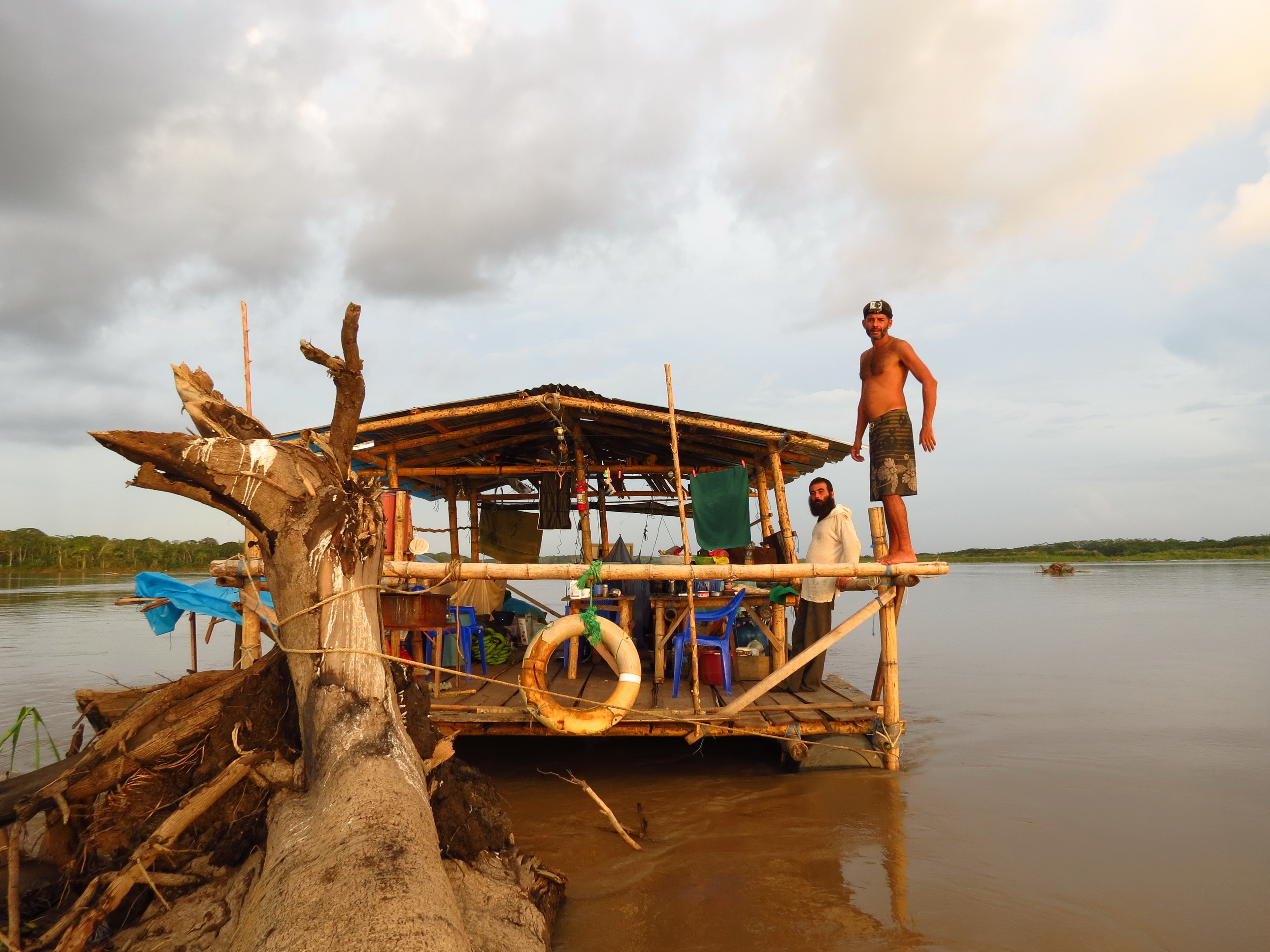
Alastair: Well that’s the wonderful freedom of being on a big journey; it’s to just be able to do what you’re passionate about at the time. But I’mm sure there have been hundreds of men, myself certainly included, who have sat around drinking beer with a friend, talking about making a raft and going down the Amazon. That is just the perfect adventure. What is it that took you from just that idle banter, idle conversation over beers, to actually doing it?
Henrik: A lot of things came together at the right time. I got on very well with this Bulgarian dude – Peycho – and I felt like I could trust him. So one evening we sat down and started doing all the initial calculations for it for how to maybe float down the Amazon on a raft. And we sat and pieced together some Excel sheets on how much the raft will weigh, and how much flow speed is in the Amazon and how much buoyancy we need and how to construct it and a lot of basic research. And within two hours we looked at each other and smiled and said, “This could maybe, possibly be done.” And we just kind of said, “Well, let’s at least try; let’s just throw all our effort into it and see if we can get going with it.”
Alastair: So the two of you built a bamboo raft and spent four months drifting, paddling, motoring down the Amazon as far as Manaus. Where did you start?
Henrik: We started in a little town in Ecuador in the very eastern part of the Amazon rainforest. You can see the Andes mountains from there. It’s just right after the Andes drop down.
Alastair: Nice. I’mve spoken for this series to Ed Stafford, who walked the Amazon and to Mark Kalch, who kayaked the Amazon. So this is now my third different Amazon story which I guess is testament to how much that river appeals to adventurous people. How long did the raft take to build?
Henrik: A month.
Alastair: And that must have been quite a fun month?
Henrik: Oh, it was super good fun. I mean, just the construction was good fun. It was such a quest to run around this little town and try to find these materials. Some of them were a bit difficult to find. And speak to tons of different people at dump yards and find used, scrap metal and all kind of fun things. It was such a good experience just constructing it.
Alastair: What did all the local people in that town think of you?
Henrik: People thought it was a bit weird in the beginning and then it slowly took shape. And I think they took interest in it, but also didn’t fully understand what the whole idea was about. There was a lot of curiosity around it and it was built on a little river beach where there were a lot of local kids that were always playing. So the local kids were always around and swimming off it and jumping off it and playing with us. So that was good fun, too.
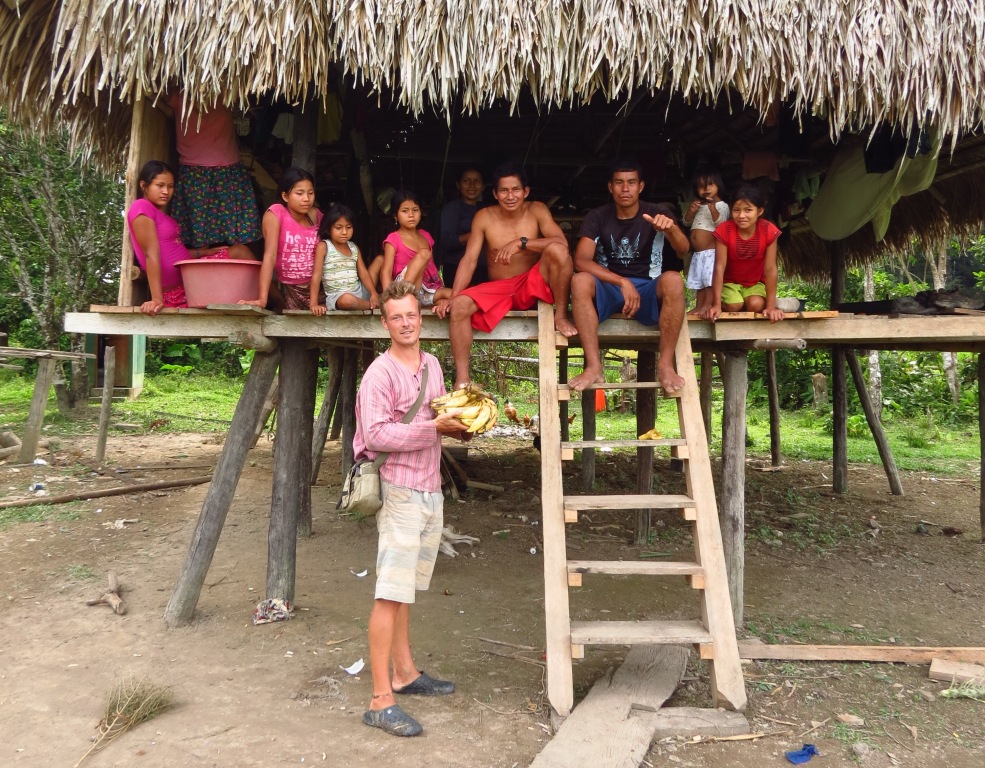
Alastair: Yeah, that must have been a really, really enjoyable, exciting part of it. Personally, I find the build up to adventures to be the frightening part before I commit to it. But it’s also an exciting part. Was this a nervous time or was it just fun and exciting?
Henrik: I think there were a lot of frightening things before we even started. We just kind of had an idea that it was possible. And then looked at a map and thought, “Oh, here’s a little town that is on the banks of a river that connects to the Amazon, so let’s go in there and see what we can do.” But it was a big challenge at the beginning, just finding materials, finding a place to stay, getting the whole thing together. And then there’s also some fear about what’s going to happen once we set off, once we push ourselves off the shore. That’s when things get a bit more scary. There was definitely a good ounce of fear in it.
Alastair: How did you feel on the first day when you’ve finished your raft, you’ve loaded it up with all your food and stuff that you need and you pushed off and you head off down the Amazon? I can’t even ask this question without smiling at the idea, but tell me how that felt, the first day and then the first night out on the river.
Henrik: Pushing ourselves off the shore was such a crazy, crazy experience because we didn’t have any oars or engine or anything, we just had some long sticks that we figured that we’d kind of navigate it with and push ourselves off the shore in case we got too close. But it turned out that the raft is a heavy structure so we didn’t have much control with these sticks. So the first day was very chaotic but it was a crazy, wild feeling, standing there and pushing it off the shore and kind of hoping, “Well, I hope this goes well. I hope that we don’t get lost or get stuck in the jungle.” But it was also a wonderful, wonderful feeling to see the raft floating and slowly moving down the river.
Alastair: And then, once you started to know what you were doing, what was the daily routine for those four months?
Henrik: We would normally park the raft for the night and then sleep so we were not floating through the night. And then we would wake up at sunrise, start floating again, and we would be fishing and playing chess and cooking food, and taking photographs, and meditating and all sorts of things. We had a lot of good times on the raft. We managed to construct some oars that we used in order to avoid collisions with tree trunks and the side of the river. So there was quite a lot of work in the first month of fighting with the oars to avoid the raft colliding with the tree trunks. And once in a while the river was also very low so the raft would get stuck on some shallow banks. It was physically hard the first month.
But after that month we bought an engine for the raft because a lot of container ships use Amazon and it would be dangerous to not have a little bit of control. So things got a little more relaxed but, both with the oars and with the engine, we didn’t use them unless we were about to collide with something. So for the majority of the day the raft would just be floating down the river in complete silence through this untouched wilderness.
Alastair: Wonderful. One thing I love about adventures is that normal life is so busy, everyone’s diaries are so full, and you think there are not enough hours in a day. But if you cut out all the crap from your life, suddenly you have 24 long hours in a day and that must have been a wonderful experience, just drifting gently.
Henrik: It was so wonderful, it was so great. We would get up at sunrise and park again at sunset and every morning wake up to these beautiful sunrises and go to bed to unbelievably beautiful sunsets. And hearing the monkeys throughout the day, and the animals, and a lot of local indigenous people would come up to us in their dugout canoes to talk and to trade. So there was a lot of really interesting and healthy interaction with the local river communities and indigenous tribes.
You had those beautiful jungle sounds all day long. From insects, from birds, from howling monkeys, from nature. So that was very special in the way it should be in the jungle. The vegetation itself was also very, very unspoiled. I didn’t see a whole lot of big clear cuts and stuff like that until the later part of it, when we got closer to Manaus and deeper into Brazil.
We started seeing more farming activities, cattle farm cities, ship traffic, these kind of things. Whereas in the beginning it was so idyllic, it was so beautiful and we would often park the raft at the side of the river during the day and just walk straight into the middle of nowhere. And it was such a wild feeling, knowing that you were probably the first man to ever set foot on these square meters and just walk through this unspoiled, wild, overgrown endless wall of vegetation.
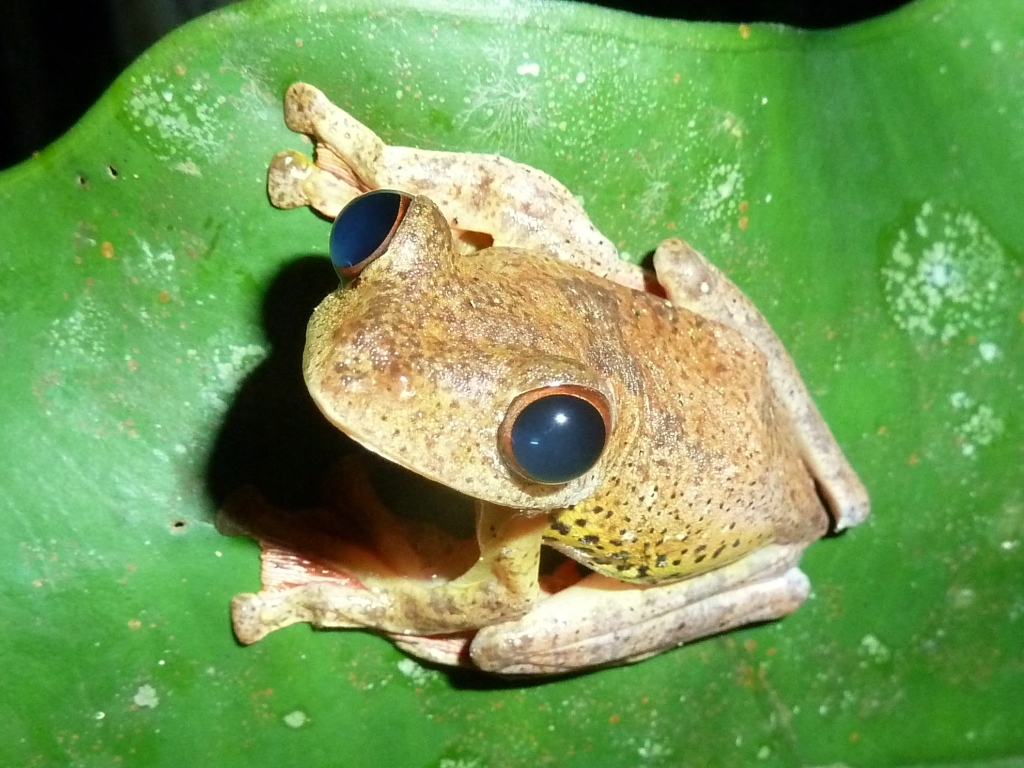
Alastair: That sounds absolutely amazing. So for anyone who is inspired to do something like this – what was the total budget of your trip? Do you roughly know?
Henrik: The raft didn’t cost a whole lot to construct. It’s on the website though but – what did we spend – I think we spent around $1500 on the raft, and that’s two people.
Alastair: And then just four months of cheap food.
Henrik: Yeah, exactly, and then four months of cheap food.
Alastair: And a few beers?
Henrik: Yeah, definitely. When we’d got into town, we would have some beers. But we’d also drink some home distilled booze that we would buy in actually quite large quantities. Maybe like a gallon at a time. Both to have our own supply but also because it was a very valuable trading commodity with the locals down the river. They wanted to trade booze with us.
Alastair: Fantastic. For someone who is planning on doing something like that, what do you know now that you wish you’d known before you started it?
Henrik: I wasn’t going to say this, but once we got deeper into the journey, actually on the Brazilian part of the Amazon, things got quite dangerous, lots more than I’md ever imagined. I think both of us underestimated this danger quite a lot. I mean there were tons of local people that told us that there were pirates there, there were drug smugglers and that they would kill us and things would be very, very scary and dangerous. But we kind of just waved it off in an… I don’t want to say arrogant manner. But I think after travelling for so many years, both of us, we’ve gotten used to people warning us about every single thing on this planet. And what I’mve seen throughout my years of cycling around the world is that this planet is not that dangerous and violent and evil. And so I think we were almost immune to these constant safety warnings but the problem was that, here on the Amazon, the warnings seemed to be true.
Alastair: I think you’re right to say that most trips and most adventures are so safe. And I, like you, probably get quite reckless with how safe places feel. But it’s good also to heed the local’s advice as well.
Henrik: Yeah, I think all the advice you get when doing adventures should, of course, be processed and taken into account. But, yeah, as you just said, cycling around the world is not dangerous, I think. Walking across America is not dangerous. Lots of these things are not dangerous. People put ideas in your head that if you cross America a bear will come and kill you. It’s not going to happen.
Alastair: Yes, for sure. So you got towards the end and the time had come for the journey to end for various reasons, and the end you described as being an anti climax and a cocktail of sadness and happiness. I really like that phrase because I always find the end of my trips to be exactly that. Anti-climax, sad, happy… Why did you feel that way?
Henrik: It was just that we had spent so much time on that raft together. We had seen so many things, we had explored so many areas, met so many people, saw so many beautiful places, fought through a lot of challenges together and great times together. The reason I was sad was because I was happy, actually. It was because the adventure had moved me so much and it was such a beautiful experience that it was a little bit sad to say goodbye to it. I mean, there’s always that.
When you’re supposed to be all whooping and, “Wow, we’re done. I can’t believe it!” But you just stand there and think quietly, “Hmm, that was the end.” It’s such a weird feeling. And then, slowly, the whole thing comes tumbling down on you and you start thinking about all the things that have happened. And you break into a smile every ten minutes throughout the day when you think about all those experiences.
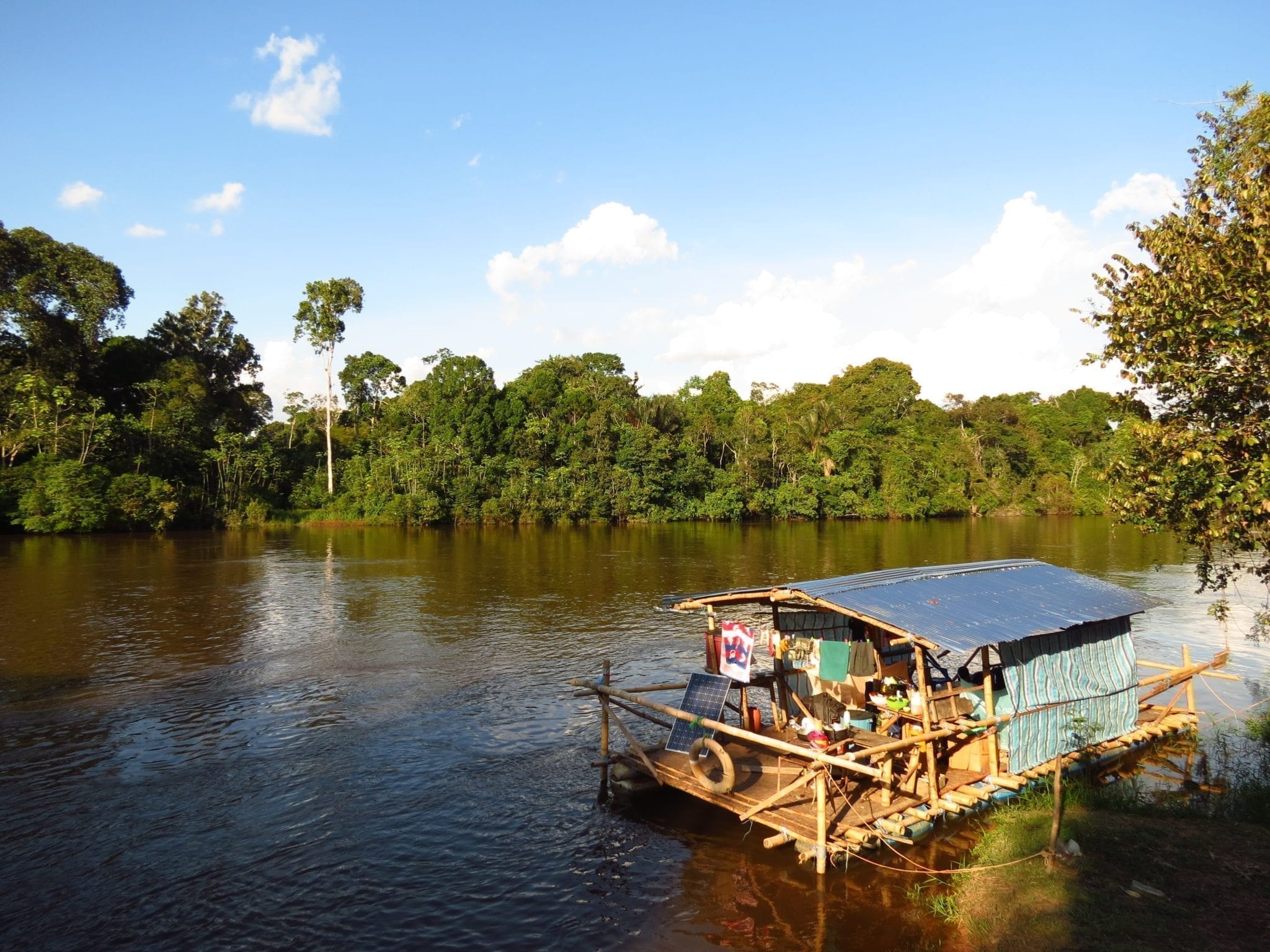
Alastair: At the end of your journey you urged people to raise a glass, with their friends, to “possibilities, positivity and persistence.” That’s an extremely powerful cocktail!
Henrik: Cheers to that!
Alastair: If I gave you £1000 for an adventure, what would you go and do?
Henrik: I’mve always wanted to get myself a kayak and go down a large river. I remember reading your book, Al, and you described how you were in canoes and you went down the Yukon. And that just sounded like a wonderful, wonderful way to explore, and that’s an adventure that I would like to undertake at some point. I think that could be very interesting.
Alastair: Yeah, that was my own little interlude during my bike trip. It was a tiny, small, not-as-cool version of what you did. But I just loved it. And maybe this is why I love your trip so much, because it’s a cool version of the Yukon trip I did which is still one of my happiest memories. And that was only 10 days in a few plastic canoes. So, yeah, your trip is very special. My last question then is: are you going to carry on cycling around the world?
Henrik: The thing is I’mm running low on money, to be honest. So that, sadly, will define the end of my trip. So I think, essentially, what I ended up doing was then trading a big chunk of my cycling route with the bamboo raft down the Amazon and I walked across America, to the wilderness.
Alastair: I think that’s a good swap.
Henrik: Yeah, I’mm happy with that decision.
My new book, Grand Adventures, is out now.
It’s designed to help you dream big, plan quick, then go explore.
The book contains interviews and expertise from around 100 adventurers, plus masses of great photos to get you excited.I would be extremely grateful if you bought a copy here today!
I would also be really thankful if you could share this link on social media with all your friends – http://goo.gl/rIyPHA. It honestly would help me far more than you realise.
Thank you so much!
Grand Adventures from Alastair Humphreys on Vimeo.
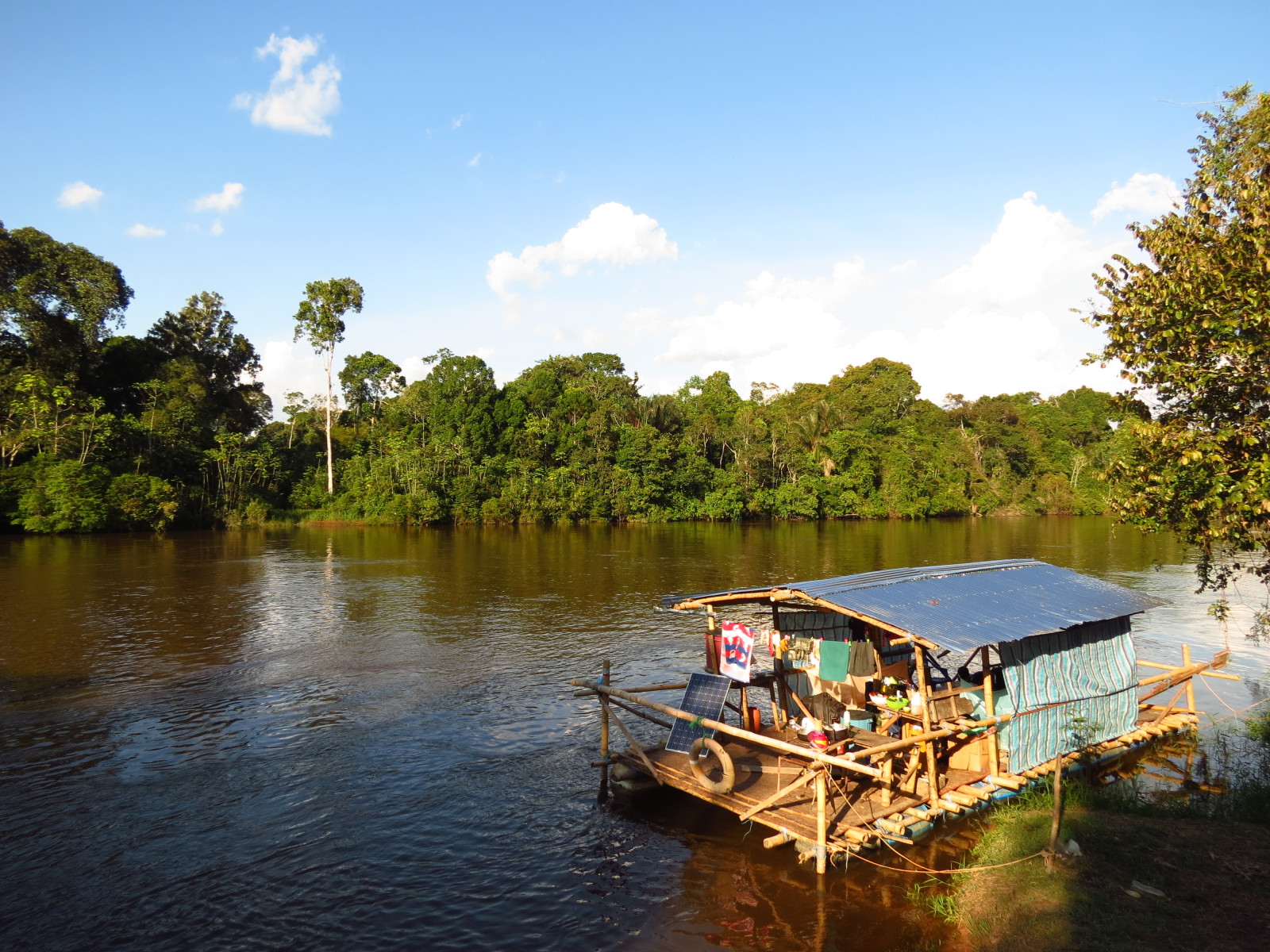
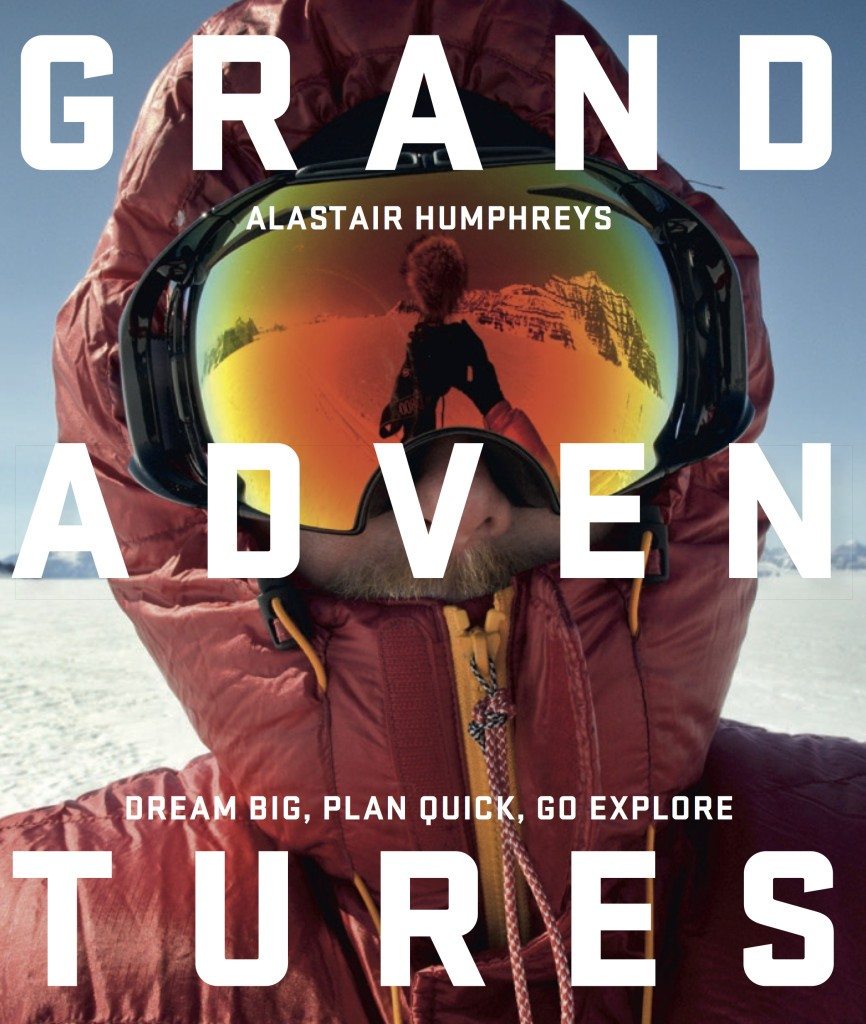



Looked like a very memorable trip indeed, well done on building that big raft, it must of taken a fair bit of ingenuity, that’s for sure.